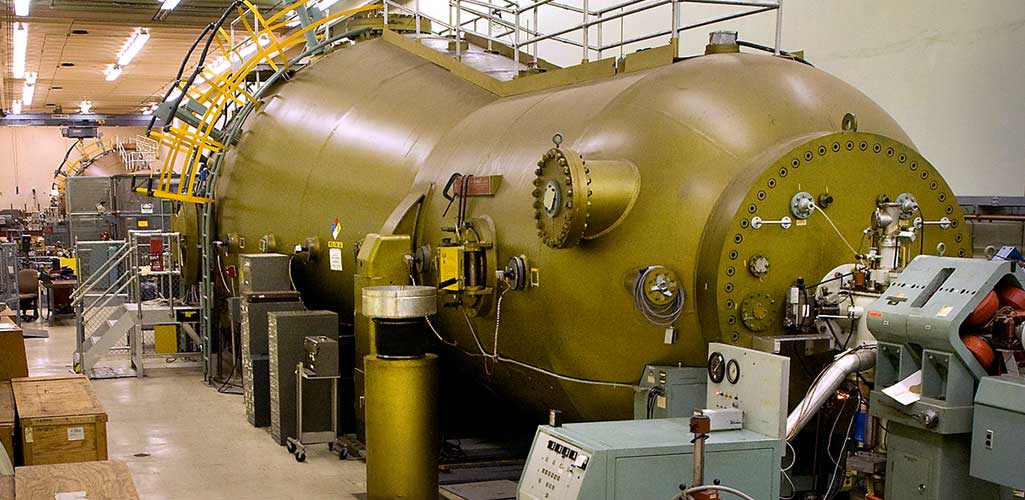Tandem Van de Graaff Facility
Providing researchers with beams of more than 50 different ion species

Brookhaven National Laboratory’s large Tandem Van de Graaff facility consists of two 15-Megavolt electrostatic accelerators that can produce ion beams of most chemical elements (from protons accelerated to 29 million electron volts (MeV) to gold ions accelerated to 337 MeV). The facility delivers these beams to various irradiation chambers available to users from academia, industry, and other research institutions.
To see how you can get involved with this facility, contact Dannie Steski at (631) 344-7851 or Tom Kubley at (631) 344-5814.
Basic Research
Brookhaven’s Tandem Van de Graaffs are the largest operational electrostatic accelerators in North America. They have been used for basic research in nuclear physics experiments in the past, including as an injector for the Lab’s Relativistic Heavy Ion Collider (RHIC). Today the Tandems focus on applied research and industrial applications.
Test Facilities and Expertise
The Brookhaven Tandems have been widely used and trusted since 1988 by more than 60 companies, laboratories and agencies from North America, Europe and Asia. Features of the Tandem facility include
- 50 different ion species available
- Accurate dosimetry with a wide range of fluxes.
- Ion beams with continuously variable well-defined energies.
- Continuous or high intensity pulsed beams
- Large automated test chamber and accurate positioning stage with laser alignment
- High implantation energies.
- Ability to change ion species and energy within minutes
- Flexible schedule
- User friendly hardware and software
- A highly experienced staff willing to work with users to customize the facility
.
Applied Research
The Tandems are used to test and calibrate the effects of radiation on materials, ion irradiation and implantation (used in the design of computer chips), for research on the biological effects of radiation, and for special R&D projects. Some specific applications include the study of radiation effects on electronics for space applications, calibration of particle detectors, studies of radiation effects in cell cultures, production of track-etched filter material, using ions to enhance superconducting materials, and high-energy ion implantation in semiconductors.
.



